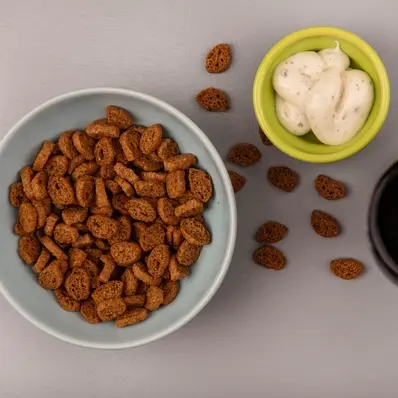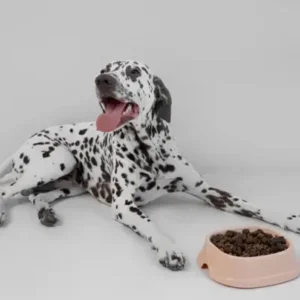Ingredients and Nutritional Value
Understanding what goes into Cesar wet dog food is essential for assessing its quality.
Key Ingredients
- Real meat (chicken, beef, turkey, or lamb)
- Animal by-products
- Added vitamins and minerals
- Artificial flavors and preservatives
Potential Concerns
- Some formulas contain meat by-products, which may not be the highest quality protein source.
- High sodium content in some recipes.
- Artificial additives may not be ideal for sensitive dogs.
Compared to premium wet dog foods, Cesar is not grain-free and doesn’t focus on high-protein, whole-food ingredients. However, it still provides a decent nutritional profile for small dog breeds.
Customer Reviews and Real Experiences
Cesar wet dog food has received a mix of praise and criticism from pet owners. While some love its convenience and taste, others raise concerns about ingredients and digestion issues.
Emily S. – “My picky eater finally eats all his food! I’ve tried so many brands, but Cesar is the only one my dog finishes. It’s a relief to see him excited for mealtime.”
Rachel M. – “I wanted to love it, but I don’t like the artificial ingredients. Wish they had a cleaner formula with more natural ingredients and fewer preservatives.”
David P. – “My dog gobbled it up but later had an upset stomach. He seems to enjoy the taste, but I now mix it with dry food instead of feeding it alone.”
Benefits of Feeding Cesar Wet Dog Food
Pet owners often choose Cesar wet food because of the following advantages:
- Highly palatable – Dogs love the taste and texture, making it great for picky eaters.
- Convenient portions – Comes in small, easy-to-serve trays.
- Soft texture – Ideal for dogs with dental issues or older dogs.
- Affordable – More budget-friendly than premium wet dog foods.
If your dog enjoys wet food and has trouble eating kibble, Cesar can be a convenient solution.
Potential Downsides of Cesar Wet Dog Food
While Cesar wet food has its perks, there are also some drawbacks:
- Not ideal for large dogs – The small portions may not be sufficient for bigger breeds.
- Contains fillers and by-products – Some recipes include lower-quality meat sources.
- High in sodium – Excess sodium may not be suitable for dogs with health concerns.
- Not a complete diet – Best used as a supplement to a balanced diet rather than a sole food source.
Other wet food brands may be a better option if you prioritize all-natural ingredients and high protein content.
Vet and Expert Opinions on Cesar Dog Food
Many veterinarians suggest that Cesar wet food can be given in moderation but may not be ideal as a complete diet due to:
- Lower-quality protein sources compared to premium brands.
- Higher fat and sodium levels, which may not be suitable for all dogs.
- Limited fiber and whole-food ingredients, which could impact digestive health.
If feeding Cesar, it’s best to mix it with high-quality dry food or other wet food options for balanced nutrition.








